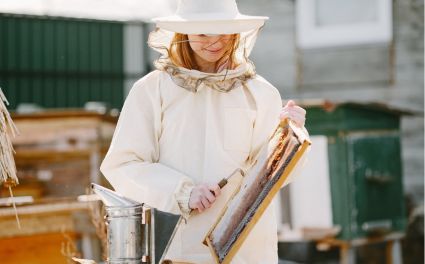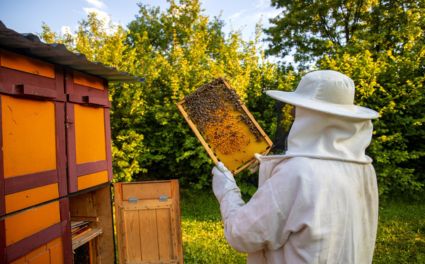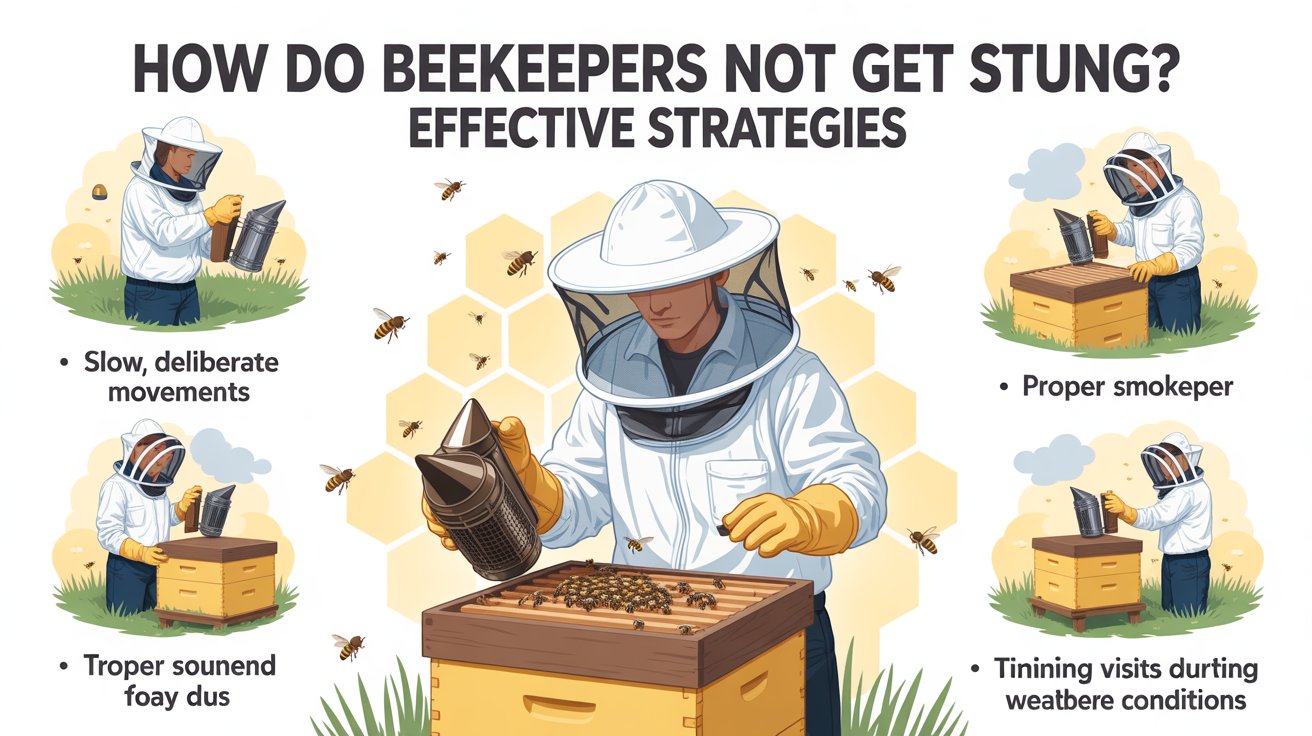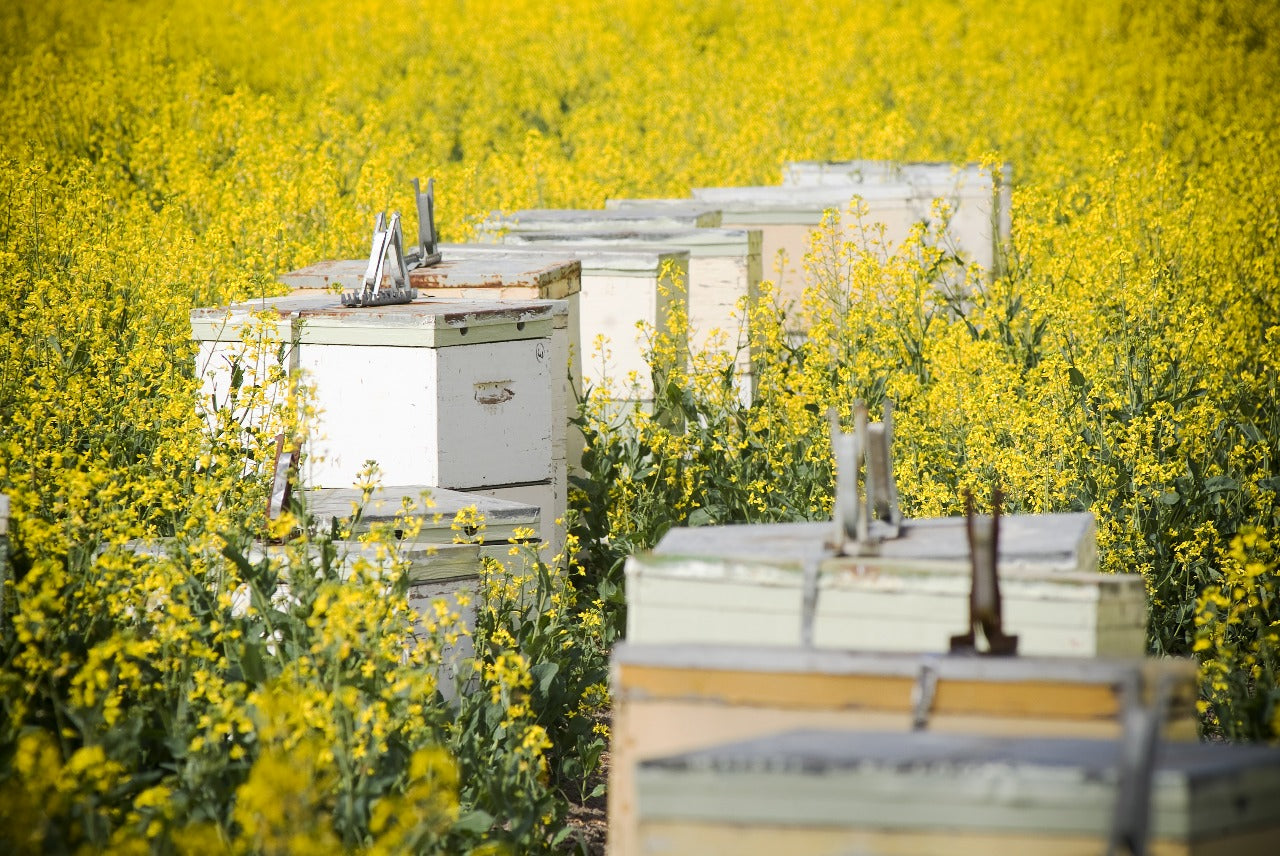Beekeeping is one of the most rewarding hobbies or professions, connecting humans directly with nature’s most industrious creatures. Yet, every new beekeeper asks the same question: how do beekeepers avoid getting stung? While bee stings are sometimes unavoidable, experienced beekeepers use specific strategies, proper gear, and mindful behavior to dramatically reduce the chances.
In this article, we’ll explore practical ways to stay sting-free — from understanding bee behavior to choosing the right protective gear and managing hives safely.
🧠 Understanding Bee Behavior
When it comes to preventing bee stings, knowledge is your best protection. Bees are not naturally aggressive — they only sting to defend their hive. Understanding what triggers them helps you stay calm and confident around your colonies.
Bee Sensitivity
Bees have an incredibly sharp sense of smell and react to sudden movement or strong scents. Perfumes, deodorants, or even the scent of sweat can agitate them. That’s why seasoned beekeepers avoid scented products and move slowly when near the hive.
Defensive Behavior
A colony becomes defensive when it feels threatened. Loud vibrations, knocking on the hive, or crushing bees during inspections can release alarm pheromones that alert other bees. Maintaining gentle movements and calm energy keeps the colony relaxed.
If you remember one rule, let it be this: stay calm and move smoothly. Bees mirror your energy — nervousness invites stings.

🧤 Proper Protective Gear
The most effective way to avoid stings is by wearing quality protective clothing that keeps bees out while keeping you comfortable. Professional gear helps maintain confidence during inspections and reduces the risk of accidental stings.
-
Beekeeping Suits: A full-body suit provides complete coverage from head to toe. Look for ventilated options that allow air circulation during warm weather.
-
Beekeeping Jackets: Ideal for lighter inspections, jackets paired with trousers offer flexibility and protection.
-
Beekeeping Gloves: Made from soft yet durable leather, gloves protect your hands while allowing dexterity for frame handling.
-
Beekeeping Veils: A must-have for facial protection, veils guard your face and neck while offering clear visibility.
-
Beekeeping Trousers: Lightweight and sting-proof, they’re perfect when paired with a jacket for flexibility.
-
Beekeeping Kids Suits: For young learners joining their parents, child-sized suits ensure safety and comfort.
-
Beekeeping Ankle Protection: A small but vital accessory that prevents bees from crawling into trouser cuffs or shoes.
Among professional and hobbyist beekeepers alike, Oz Armour is known for its premium protective clothing — engineered with ventilated layers that keep beekeepers cool, comfortable, and sting-free. Designed for durability and safety, their gear supports beginners and experts alike through all hive conditions.
🐝 Gentle Hive-Handling Techniques
How you interact with your bees determines how they respond. Rough handling can easily trigger defensive behavior, while calm, deliberate actions help maintain peace.
Move Slowly
Open hives gently. Avoid knocking boxes or frames. Bees interpret sudden jolts as threats. Smooth, steady movements show that you’re not a danger.
Use Smoke Wisely
A smoker is a beekeeper’s best friend. Cool smoke masks alarm pheromones, calming the colony. A few gentle puffs at the hive entrance before opening helps prevent defensive reactions — but avoid over-smoking, which can cause stress.
Avoid Crushing Bees
Crushing a bee releases alarm pheromones that alert others. Be mindful when placing frames back into the hive and use a bee brush to move bees safely off surfaces.
Gentle Reassembly
When closing up, align boxes and frames properly. Pinching bees between boxes can trigger agitation in the next inspection.
Beekeeping is as much about rhythm as it is about care — steady hands and slow movements are the hallmarks of a sting-free beekeeper.
☀️ Timing and Weather Considerations
The time of day and weather conditions can greatly influence bee temperament.
Ideal Times
Bees are calmer in the early morning or late afternoon when foraging is minimal. Mid-day inspections can disrupt active foragers, increasing agitation.
Weather Conditions
Avoid working during rain, extreme heat, or high winds. Humid or stormy weather makes bees defensive as they try to protect their hive. Cool, sunny days with gentle breezes are ideal for inspections.
By scheduling your beekeeping sessions wisely, you’ll find your bees more cooperative — and yourself more relaxed.
🧘♂️ Beekeeper Attitude and Behavior
The way you behave around bees matters as much as what you wear. Bees can sense agitation or aggression.
Stay Calm and Patient
Remain calm even if a bee lands on you. Swatting or flailing only provokes stings. Most bees will fly away if left undisturbed.
Respect Their Space
Avoid blocking the hive entrance, standing directly in flight paths, or breathing heavily into the hive. Give the colony space to work.
Maintain Hygiene
Bees are sensitive to scent. Avoid perfumes, aftershaves, or strong detergents before working with them. Even the smell of crushed grass can trigger defensiveness.
Positive Energy
Beekeeping requires mindfulness. A calm, steady energy creates harmony between you and your bees — helping build trust over time.
🔍 Monitoring and Hive Management
Regular inspections and proper hive management ensure your bees remain healthy, calm, and productive.
-
Regular Checks: Inspect every 7–10 days during active seasons to monitor brood development, food stores, and colony health.
-
Ventilation: Proper airflow prevents overheating, which can stress bees and cause irritability.
-
Disease Control: Keep an eye out for Varroa mites, wax moths, or other pests. Healthy bees are less defensive.
-
Resource Management: Ensure adequate honey and pollen stores, especially before winter. Hungry colonies are more prone to aggression.
Clean hives, stable temperatures, and adequate nutrition all contribute to calmer bees — and fewer stings.
For detailed guides on hive maintenance, you can read more blogs about beekeeping and explore expert tips on sustainable apiary management.
🧴 Additional Safety Tips
Even with proper preparation, occasional stings may happen. Here are quick ways to minimize discomfort:
-
Remove the stinger quickly using a fingernail or credit card — don’t squeeze it.
-
Wash the area with soap and water.
-
Apply ice to reduce swelling.
-
If allergic, always keep antihistamines or an epinephrine pen nearby.
Remember: one sting doesn’t define your beekeeping experience. Each encounter is a chance to learn how to handle bees more effectively next time.

🌻 Why Quality Gear Matters
A beekeeper’s confidence comes from both knowledge and comfort. Reliable gear lets you work freely without fear of stings.
High-end brands like Oz Armour have become synonymous with professional beekeeping apparel. Their ventilated beekeeping suits, jackets, and gloves combine maximum protection with breathability, ensuring beekeepers can focus on hive management instead of worrying about stings.
From beekeeping trousers for flexibility to ankle protection for complete coverage and kids suits for young learners, every piece of gear enhances safety, comfort, and control during hive interactions.
🌼 Conclusion
Beekeeping is an art of patience, awareness, and respect. By understanding bee behavior, using the right protective gear, and adopting calm, mindful techniques, beekeepers can drastically reduce the risk of stings.
Remember — bees only sting to defend their home. If you approach them gently and work with their rhythm, they respond with cooperation.
Equip yourself with reliable protective wear from trusted names like Oz Armour, stay observant, and continue to read more blogs about beekeeping to grow your knowledge. With experience and confidence, you’ll soon find that working with bees can be peaceful, productive, and sting-free.













